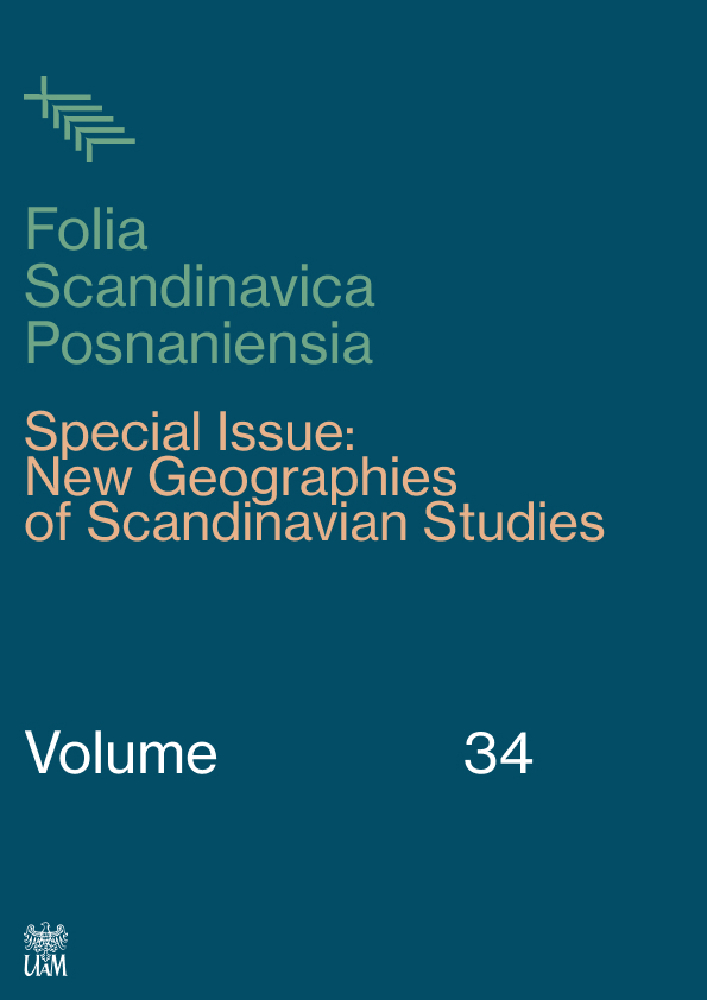Abstract
In recent decades, a wide range of Scandinavian crime novels have conquered Hungarian readers, providing a more sophisticated perspective on the existing image of Scandinavian cultures and societies, with their intriguing social content and appealing landscapes. This wave of crime fiction has not only contributed to a better understanding of Scandinavia, but also drawn attention to the genre itself, which culminated in a parody written by a Hungarian stand-up comedian, Zoltán Kőhalmi. In his incorporation of all the obligatory ingredients of Scandinavian crime novels, the comedian not only reuses the self-image that Scandinavian crime narratives convey, he pillories the genre requirements by exaggerating the use of the most well-known characteristics. The analysis of Kőhalmi’s satirical use of Scandinavian crime narratives serves as a case study for a closer understanding of conceptions of Scandinavia in contemporary Hungary.
References
Agger, G. (2016). Nordic Noir – Location, identity and emotion. In: N. A. Garcia (ed.), Emotions in contemporary TV series (pp. 134–152). Houndsmills: Palgrave Macmillan. DOI: https://doi.org/10.1007/978-1-137-56885-4_9
Agger, G. & Waade, A. M. (2010). Skandinavisk krimiproduktion og krimiforskning. In: G. Agger & A. M. Waade (eds.), Den skandinavske krimi. Bestseller og blockbuster (pp. 11–18). Göteborg: Nordicom.
Bényei, T. (2000). Rejtélyes rend. A krimi, a metafizika és a posztmodern. Budapest: Akadémiai Kiadó.
Benyovszky, K. (2001). A jelek szerint. A detektívregény-olvasás tapasztalatairól. Kalligram 2001/X. Retrieved from https://www.kalligramoz.eu/index.php/Kalligram/Archivum/2001/X.-evf.-2001.-marcius/A-jelek-szerint (accessed 9 September 2022).
Czapliński, P. (2020). Literature and geography. Porównania 2(27), 143–166. DOI: https://doi.org/10.14746/por.2020.2.8
Dentith, S. (2000). Parody. London, New York: Routledge.
Grydehøj, A. (2020). Nordic Noir. In: A. Lindskog & J. Stougaard-Nielsen (eds.), Introduction to Nordic culture (pp. 117–129). London: UCL Press. DOI: https://doi.org/10.2307/j.ctv13xprms.14
Hayward, K. J. & Hall, S. (2021). Through Scandinavia, darkly: A criminological critique of Nordic Noir. The British Journal of Criminology 61(1), 1–21. Retrieved from https://academic.oup.com/bjc/article/61/1/1/5871860 (accessed 4 August 2022). DOI: https://doi.org/10.1093/bjc/azaa044
Jákfalvi, M. & Kappanyos, A. (1990). A nagy detektív és a posztmodern. Literatura 1990/4, 358–367.
Klapcsik, S. (2005). A detektívregény műfajának lehetőségeiről: a nyomozás elméleti paradigmái. Eresz 2005/1, 34–47.
Kőhalmi, Z. (2019). A férfi, aki megølte a férfit, aki megølt egy férfit, avagy 101 hulla Dramfjordban. Budapest: Helikon.
Miklós, Á. K. (2014). Norvégia egy kis Tündérország (Jo Nesbø regényeiről). Helikon 2014/9, 17–18.
Miklós, Á. K. (2018). A nyolc fogaskerék esete. A detektívtörténetek mechanizmusai. Budapest: Napvilág.
Nesbø, J. (2019). Kniv. Oslo: Aschehoug.
Neumann, I. B. (1994). A region-building approach to Northern Europe. Review of International Studies 20(1), 53–74. DOI: https://doi.org/10.1017/S0260210500117784
Oxfeldt, E., Nestingen, A. & Simonsen, P. (2017). The happiest people on Earth? Scandinavian narratives of guilt and discontent. Scandinavian Studies 89(4), 429–446. DOI: https://doi.org/10.5406/scanstud.89.4.0429
Rékai, A. (2019). A skandináv krimi sikerének nyomában. Præ. Retrieved from https://www.prae.hu/article/11352-a-skandinav-krimi-sikerenek-nyomaban/ (accessed 7 August 2022).
Sarkadi, Zs., Herczeg, M. (2019). Kőhalmi: Nem az irodalmat akartam megreformálni, hanem nekem ez így vices. 444. Retrieved from https://444.hu/2019/08/29/kohalmi-nem-az-irodalmat-akartam-megreformalni-hanem-nekem-ez-igy-vicces (accessed 7 August 2022).
Stougaard-Nielsen, J. (2017). Scandinavian crime fiction. London, Oxford, New York, New Delhi, Sydney: Bloomsbury Academic.
Szűcs, J. (1983). The three historical regions of Europe. An outline. Acta Historica Academiae Scientiarum Hungaricae 29(2–4), 131–184.
Varga, B. (2008). Sherlock Holmes Heidelbergben. András Sándor Gyilkosság Alaszkában című regénye és az anti-detektívtörténet. Irodalomtörténet 2008/3, 378–401.
Veres, A. (2019). Rejtő és Karinthy. Műhely 2019/1, 79–87. Retrieved from http://real.mtak.hu/104901/1/IT_2019-1_Veres_RejtoesKarinthy-.pdf (accessed 6 August 2022).
Wolff, L. (1994). Inventing Eastern Europe: The map of civilization on the mind of the Enlightment. Palo Alto: Stanford University Press.


